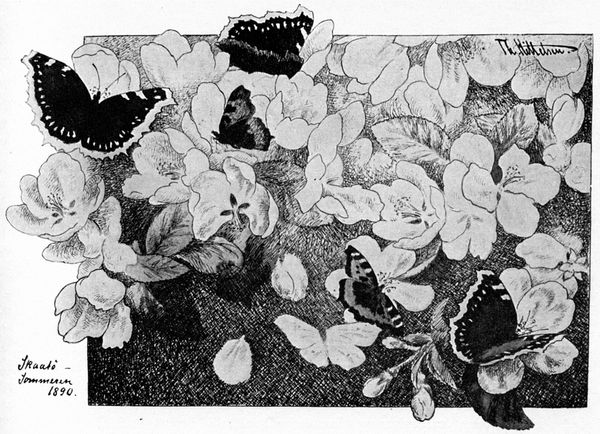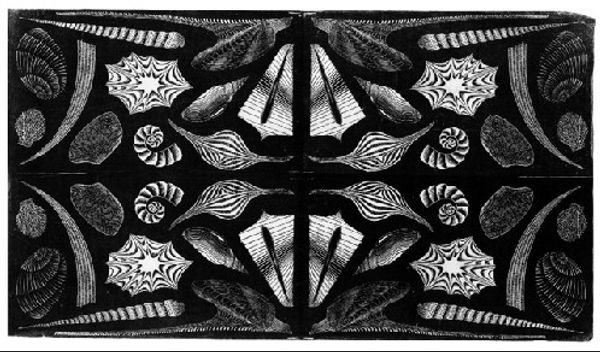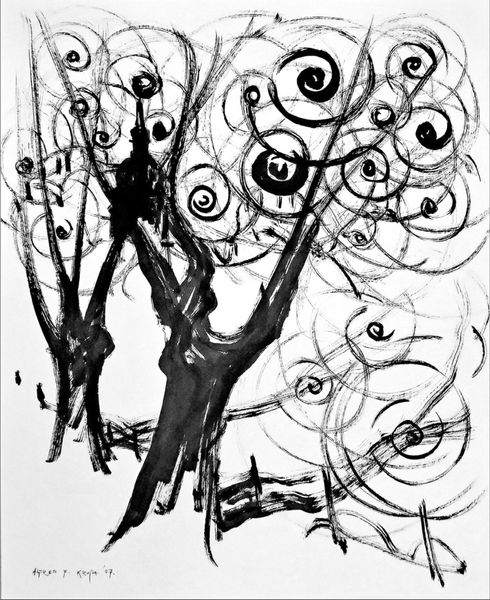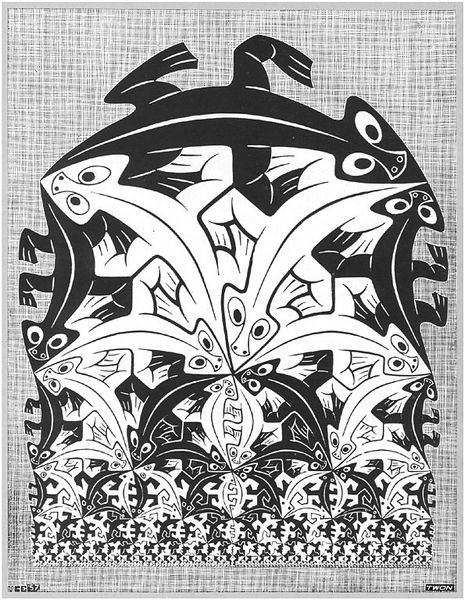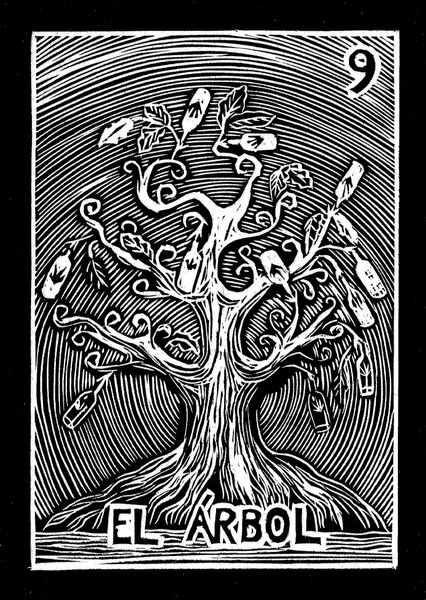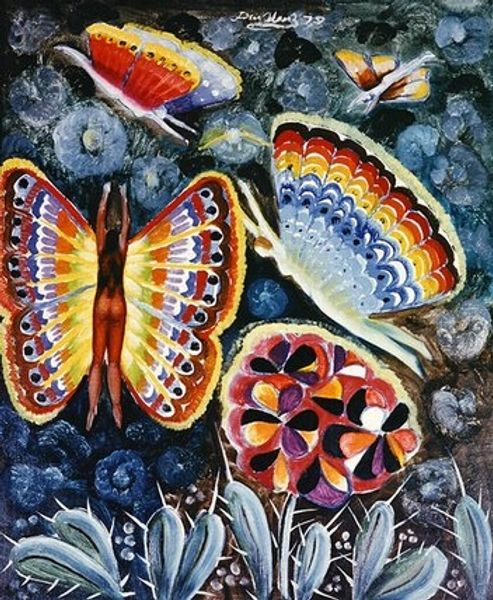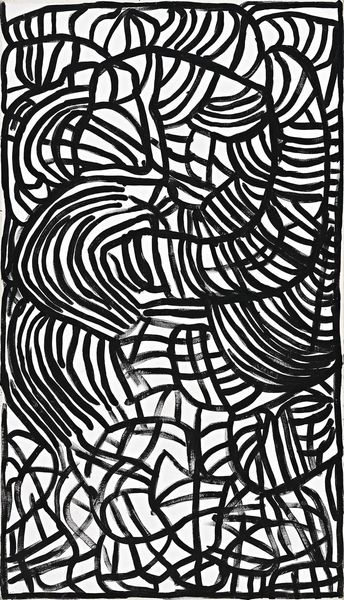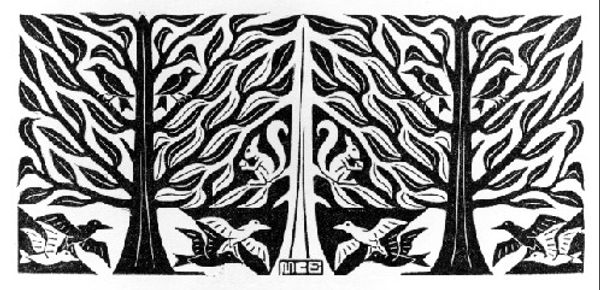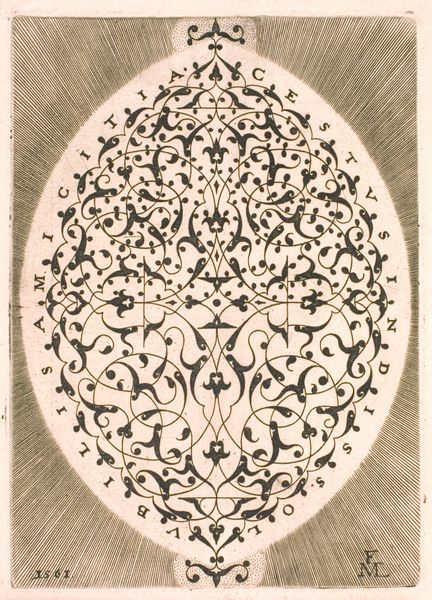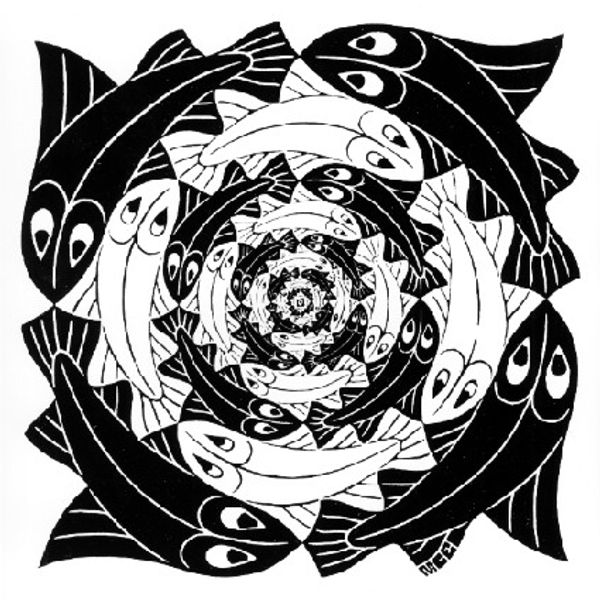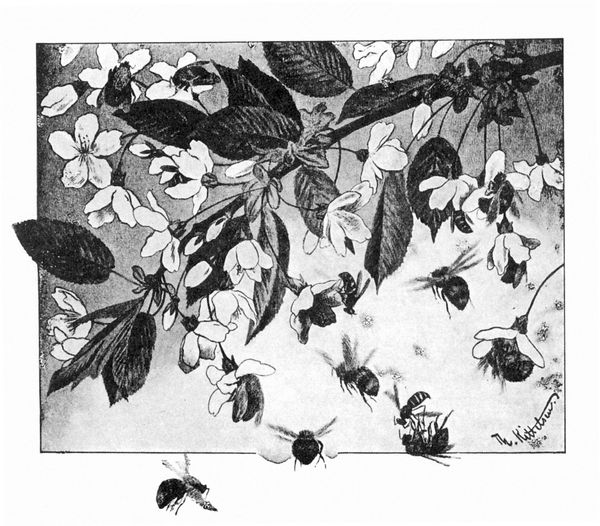
drawing, print
#
drawing
# print
#
pattern
#
figuration
#
geometric
#
modernism
Copyright: M.C. Escher,Fair Use
Editor: We’re looking at M.C. Escher’s "Butterflies" from 1950, a black and white print of varying butterflies. It feels like organized chaos. There's so much detail packed into one image, yet there is this clear gradient. What do you notice in this piece, particularly concerning its formal qualities? Curator: Indeed. First, observe the stark contrast created by the woodcut. The rigorous geometry, specifically within the diminishing butterfly forms towards the top, plays with figure and ground. How does this structural progression, from representational to near-abstract, influence your understanding of space? Editor: I hadn't really considered how they shift from distinct to barely there. It gives the sense of looking at a diagram disintegrating...or forming. Curator: Precisely. Notice also the bilateral symmetry prevalent in each butterfly motif, how the image teeters between complex representation and fundamental geometric pattern. Escher masterfully interweaves detailed, unique figuration at the base with simpler, geometric representations to create the illusion. The edges use parallel striations. How does that contribute to the piece? Editor: It acts like a frame almost? Which really draws attention to what he wants the viewers focus to be. So everything from color and detail to form contribute to the structure here. Curator: Precisely. Reflect on how our visual parsing contributes meaning here.
Comments
No comments
Be the first to comment and join the conversation on the ultimate creative platform.


